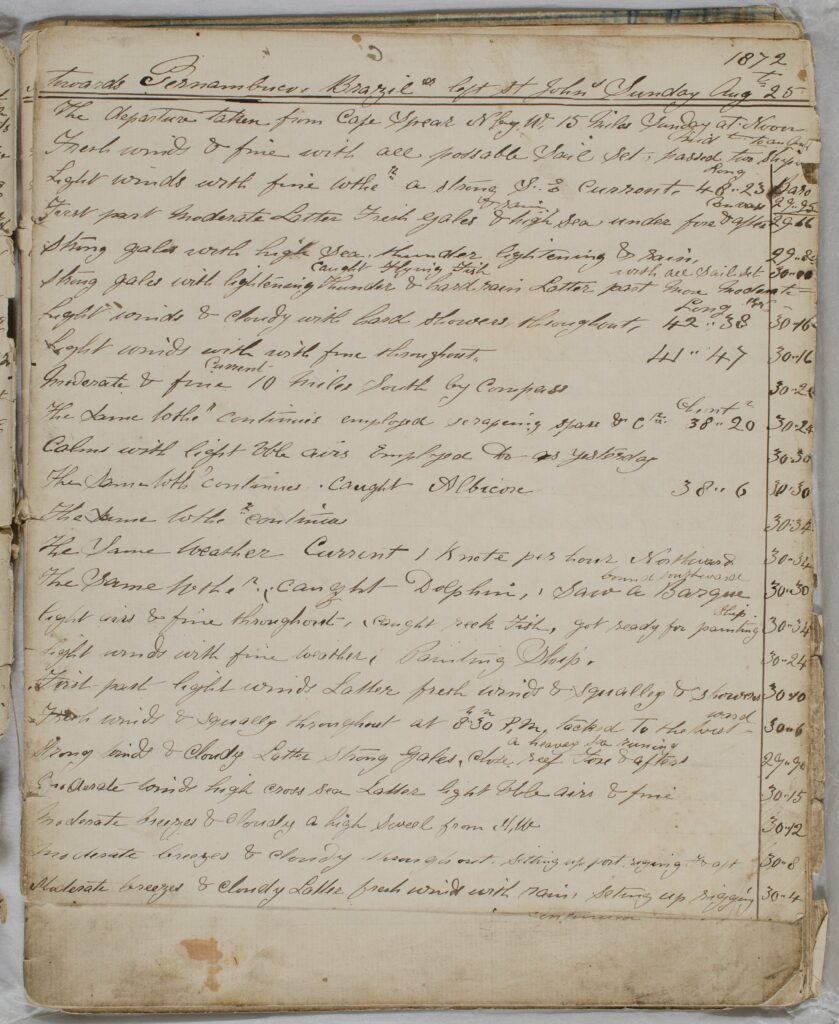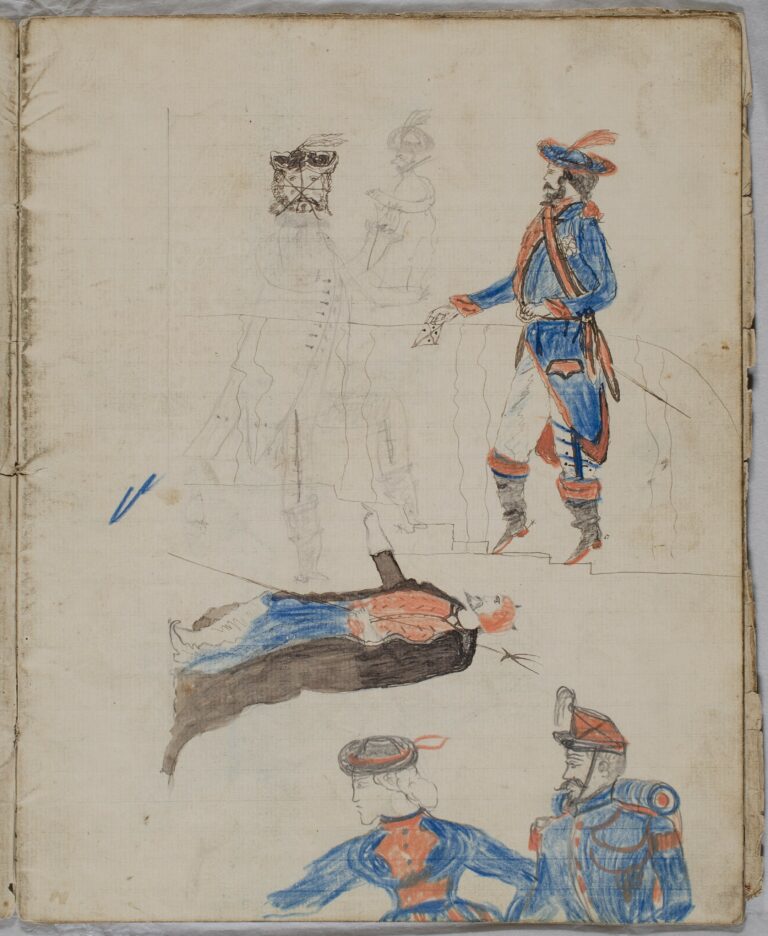Thomas Dyke was a Poole master mariner who worked on ships all over the UK in the mid to late 1800s, particularly in the Newfoundland trade. His voyage abroad the Cora began on the 31st July 1872 when the schooner left Greenock in Scotland at noon to make the 2000 mile trip across the Atlantic to St John’s in Newfoundland. Thomas diligently records the conditions and day-to-day happenings on each leg of a voyage that would take the Cora to Pernambuco, Brazil, Brooklyn in the US, and Malaga in Spain.
Amongst the day-to-day details and his long hand calculations, however, Thomas took the time to sketch other ships that caught his eye, as well as various elaborately uniformed characters, knights in armour, and even castles and country houses.



